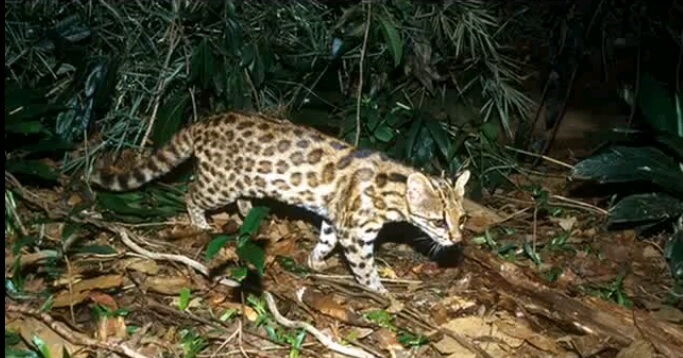Until now, scientists thought that there was only one species of spotted Brazilian cat known as the tigrina that grew to the size of a domestic cat. However, genetic data now show that the tigrina populations in northeastern and southern Brazil are completely separate, with no evidence of recent interbreeding. Therefore they should be treated as two different species.

Researchers reported this week in the journal Current Biology that they have identified a mysterious new species of wild cat living in Brazil. The discovery is a reminder of how little we know about the natural world, even when it comes to such charismatic creatures. The findings also have important implications for cat conservation, the researchers say.
Until now, the scientists thought that in Brazil lived a single species of spotted Brazilian cat known as tigrina, which grew to the size of a domestic cat. However, genetic data now show that the tigrina populations in northeastern and southern Brazil are completely separate, with no evidence of recent interbreeding. Therefore they should be treated as two different species.
"Our research focused on the tigers that roam in the northeast of Brazil, where almost nothing is known about their biology," says Eduardo Izirek from the Pontifical Catholic University in Rio Grande do Sul in Brazil, who noted that much more is known about the cats living in the southern part of the country.
Izirik and his colleagues discovered a complex set of relationships between tigrines and two other Neotropical cat species. that the evolutionary history included ancient hybridization and movement of genes between them and the northern tigrin (tigrinus leopardus). In contrast, the southern tigrina (recently recognized as Leopardus guttulus) is related to Jouproa's cats, leading to extreme levels of interspecies hybridization throughout their contact zone. These patterns add to the evidence of hybridization that can occur between closely related species. It should be noted that all four cat species are in danger of extinction.
As for the two tigrina species, the researchers claim that they may be adapted to different habitats. The northern cats that live mainly in the dry savannas, and the members of the southern species live in denser and wetter Atlantic forests.
"The differences between these different habitats provide a clue to the recently recognized fitness differences between these species that may have been involved in their initial evolutionary separation," says Tatian Trigo, from the same university, while Izirak adds, "All four species are endangered, and we need to learn as much as possible about genetics, their ecology and evolution to be able to design adequate conservation strategies for them.”

6 תגובות
The current picture is correct,
Before that there was a picture of a wild cat (Felis Lybica) and therefore the first reaction,
Then the picture was changed, so I asked to remove the first comment,
The photos were published by the researchers themselves and distributed in all media
The picture is taken from National Geographic - http://newswatch.nationalgeographic.com/2013/11/27/new-species-wild-cat-found-prowling-brazil/
In addition, the image appears on several other sites that appear to be reliable. And there is another picture: http://www.digitaljournal.com/article/357452
I don't know why to doubt……..
In other pictures you see a red-haired cat with slightly wet hair. In the end it will become clear that none of the published photos is an authentic photo; All are pictures of common domestic cats that have been attached for illustration purposes only.
In the picture a wild cat,
Elsewhere I saw a picture of the new cat different from the one here,
In other pictures the cat is spotted, which corresponds to its name leopardus = spotted.
You should check…